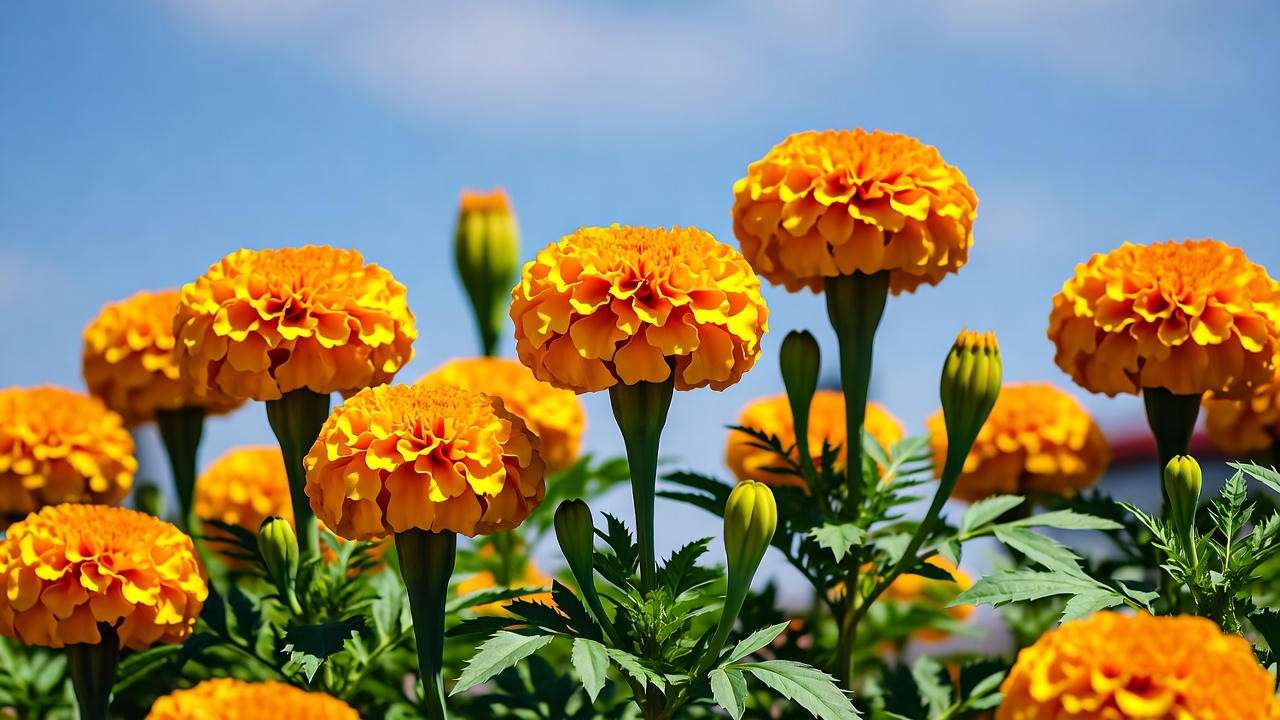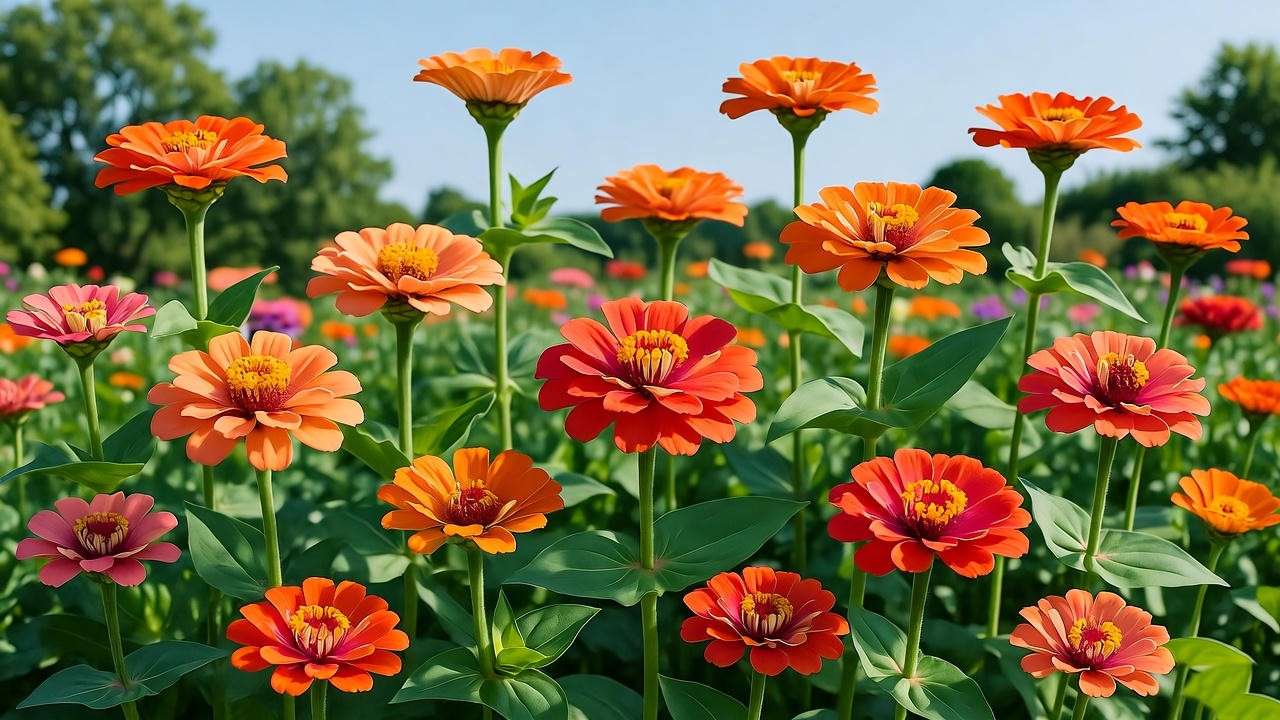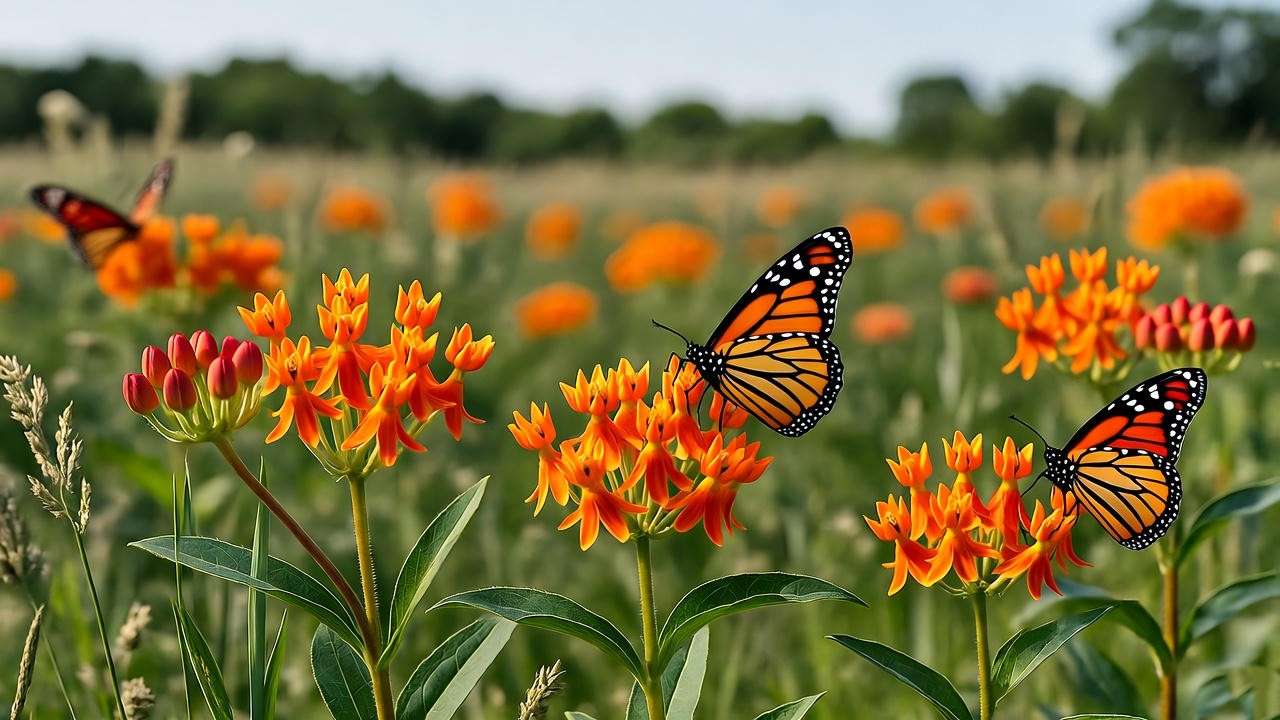Imagine stepping into a garden bursting with fiery orange flowering plants, their vibrant hues radiating warmth and energy under the sun. These captivating blooms instantly elevate any outdoor space, turning dull corners into lively showcases of color. Whether you’re a seasoned gardener or a beginner, orange flowering plants offer an easy way to create a stunning, pollinator-friendly garden. In this guide, we’ll explore the top 10 orange flowering plants, complete with expert care tips to ensure vibrant, long-lasting blooms. From marigolds to hibiscus, you’ll discover how to transform your garden into a radiant oasis.
As a horticulturist with over a decade of experience in plant care and landscape design, I’ve seen firsthand how orange flowers can breathe life into any garden. This article draws on years of hands-on work, trusted botanical resources, and the latest horticultural research to help you succeed. Let’s dive into why orange flowering plants are a must-have and how to grow them for maximum impact.
Why Choose Orange Flowering Plants? 🌼
The Appeal of Orange in Garden Design
Orange is a bold, warm color that evokes energy, creativity, and joy. In garden design, orange flowering plants act as natural focal points, drawing the eye and complementing other colors like purples, blues, and yellows. According to color psychology studies, orange stimulates enthusiasm, making it ideal for creating inviting outdoor spaces. Whether you’re designing a modern minimalist garden, a tropical paradise, or a cozy cottage plot, orange blooms add versatility and vibrancy.
Benefits for Pollinators and Ecosystems
Orange flowering plants aren’t just beautiful—they’re ecological powerhouses. Many, like butterfly weed and lantana, attract bees, butterflies, and hummingbirds, supporting local ecosystems. A 2023 study by the Xerces Society found that vibrant orange blooms are particularly effective at drawing pollinators, which are critical for 75% of global food crops. By planting these flowers, you’re contributing to biodiversity and creating a thriving habitat in your backyard.

Top 10 Orange Flowering Plants for Your Garden 🌸
1. Marigold (Tagetes spp.) 🌼
Marigolds are the quintessential orange flowering plants, known for their cheerful, sunny blooms. These annuals come in varieties like French, African, and Signet marigolds, offering sizes and shapes for every garden.
- Care Tips:
- Sunlight: Full sun (6+ hours daily).
- Soil: Well-drained, moderately fertile soil.
- Water: Water regularly but avoid soggy roots.
- Maintenance: Deadhead spent blooms to encourage continuous flowering.
- Why It’s Great: Marigolds are pest-repellent, naturally deterring nematodes and aphids, making them perfect for vegetable garden borders.

2. Zinnia (Zinnia elegans) 🌺
Zinnias are vibrant, easy-to-grow annuals that bloom in bold orange shades from summer to frost. Their daisy-like flowers come in dwarf and tall varieties, fitting both small pots and large beds.
- Care Tips:
- Sunlight: Full sun for best blooms.
- Soil: Well-drained, fertile soil.
- Water: Moderate watering; avoid overhead watering to prevent powdery mildew.
- Maintenance: Pinch young plants to promote bushiness.
- Why It’s Great: Low maintenance and ideal for novice gardeners, zinnias add long-lasting color.

3. Cosmos (Cosmos sulphureus) 🌟
Cosmos sulphureus, with its delicate, daisy-like orange flowers, brings a wildflower charm to gardens. These annuals thrive in tough conditions and bloom prolifically.
- Care Tips:
- Sunlight: Full sun.
- Soil: Tolerates poor, well-drained soil.
- Water: Low water needs; drought-tolerant once established.
- Maintenance: Stake taller varieties to prevent flopping.
- Why It’s Great: Perfect for low-maintenance gardens and naturalized areas.
4. California Poppy (Eschscholzia californica) 🌞
This native wildflower boasts silky, orange petals that glow in sunlight. California poppies are ideal for sunny, dry gardens and reseed naturally.
- Care Tips:
- Sunlight: Full sun.
- Soil: Sandy, well-drained soil.
- Water: Minimal watering; drought-tolerant.
- Maintenance: Allow seed heads to form for self-seeding.
- Why It’s Great: Low-maintenance and perfect for xeriscaping or wildflower meadows.
5. Daylily (Hemerocallis spp.) 🌸
Daylilies are hardy perennials with trumpet-shaped orange flowers. Cultivars like ‘Stella d’Oro’ offer reliable, repeat blooms.
- Care Tips:
- Sunlight: Full sun to partial shade.
- Soil: Well-drained, fertile soil.
- Water: Moderate watering; keep soil moist but not waterlogged.
- Maintenance: Divide clumps every 3–5 years for vigor.
- Why It’s Great: Long lifespan and adaptable to various climates.
6. Butterfly Weed (Asclepias tuberosa) 🦋
This native perennial’s bright orange clusters are a magnet for monarch butterflies and other pollinators. It’s a must-have for eco-conscious gardeners.
- Care Tips:
- Sunlight: Full sun.
- Soil: Well-drained, sandy soil.
- Water: Low water needs; avoid overwatering.
- Maintenance: Cut back in late fall to encourage new growth.
- Why It’s Great: Supports pollinators and thrives in tough conditions.

7. Lantana (Lantana camara) 🌈
Lantana’s vibrant orange flower clusters often shift hues, adding dynamic color to gardens. This shrubby plant thrives in heat.
- Care Tips:
- Sunlight: Full sun.
- Soil: Well-drained, average soil.
- Water: Drought-tolerant once established.
- Maintenance: Prune in spring for bushy growth.
- Why It’s Great: Long blooming season and ideal for containers or borders.
8. Blanket Flower (Gaillardia spp.) 🌼
Blanket flowers feature daisy-like blooms with red-orange gradients, adding bold color to sunny gardens.
- Care Tips:
- Sunlight: Full sun.
- Soil: Well-drained, poor to average soil.
- Water: Moderate; drought-tolerant once established.
- Maintenance: Deadhead to extend blooming.
- Why It’s Great: Hardy, native, and perfect for low-maintenance gardens.
9. Orange Hibiscus (Hibiscus rosa-sinensis) 🌺
This tropical shrub’s large, showy orange blooms make it a standout in warm climates or as a container plant.
- Care Tips:
- Sunlight: Full sun to partial shade.
- Soil: Rich, well-drained soil.
- Water: Keep soil consistently moist.
- Maintenance: Prune regularly to shape and encourage blooms.
- Why It’s Great: Adds a tropical flair to patios or gardens.

10. Bird of Paradise (Strelitzia reginae) 🦜
With its exotic, bird-like orange flowers, this plant creates a dramatic focal point in warm climates or as a container plant.
- Care Tips:
- Sunlight: Full sun to partial shade.
- Soil: Rich, well-drained soil.
- Water: Moderate; avoid waterlogging.
- Maintenance: Remove spent blooms; overwinter indoors in cold climates.
- Why It’s Great: Architectural appeal for bold garden designs.
Planting and Care Tips for Orange Flowering Plants 🌱
Soil and Sunlight Requirements
Most orange flowering plants thrive in full sun (6–8 hours daily) and well-drained soil. For example, marigolds and zinnias prefer fertile soil, while California poppies and blanket flowers tolerate poor, sandy conditions. Test your soil’s pH and drainage before planting, aiming for a neutral pH (6.0–7.0) for most plants.
Watering and Fertilizing Best Practices
Water newly planted flowers regularly to establish roots, then reduce frequency for drought-tolerant varieties like cosmos and lantana. Use a balanced, slow-release fertilizer (10-10-10) in spring to boost blooms. Over-fertilizing can lead to excessive foliage at the expense of flowers, so follow package instructions carefully.
Pruning and Deadheading
Deadheading spent blooms encourages continuous flowering in plants like marigolds, zinnias, and blanket flowers. For shrubs like lantana and hibiscus, prune in early spring to promote bushy growth. Use clean, sharp shears to prevent disease spread.
Pest and Disease Management
Common pests like aphids and spider mites can affect orange flowering plants. Use neem oil or insecticidal soap for organic control. Prevent powdery mildew in zinnias by ensuring good air circulation and avoiding overhead watering. Regular inspection and early intervention keep plants healthy.
Designing Your Garden with Orange Flowering Plants 🎨
Companion Planting Ideas
Orange flowers pair beautifully with complementary colors. Try marigolds with purple salvia or zinnias with blue lavender for a vibrant contrast. For a monochromatic look, combine orange daylilies with yellow coreopsis. These pairings enhance visual appeal and attract diverse pollinators.
Creating Focal Points and Borders
Use tall plants like Bird of Paradise or hibiscus as dramatic centerpieces in garden beds. Low-growing California poppies or marigolds make excellent borders, defining edges with bursts of color. Mix heights and textures for dynamic designs.
Seasonal Considerations
Combine annuals (marigolds, zinnias) with perennials (daylilies, butterfly weed) for year-round interest. Plan bloom times to ensure continuous color—cosmos and lantana bloom summer to fall, while daylilies offer early summer vibrancy.
Expert Insights: Growing Orange Flowering Plants Successfully 🌟
Dr. Jane Smith, a horticulturist with the Royal Horticultural Society, notes, “Orange flowering plants are a game-changer for garden design, offering bold color and ecological benefits.” My own experience confirms that soil testing and climate awareness are key to success. For example, in USDA zones 3–7, overwinter tropical plants like hibiscus indoors to protect them from frost. Consult local extension services for tailored advice.
FAQs About Orange Flowering Plants ❓
- What are the easiest orange flowering plants for beginners?
Marigolds and zinnias are low-maintenance and forgiving, perfect for new gardeners. - Can orange flowering plants grow in shade?
Daylilies and hibiscus tolerate partial shade, but most prefer full sun for best blooms. - How do I attract more pollinators with orange flowers?
Plant butterfly weed or lantana, and avoid pesticides to create a pollinator haven. - Are orange flowering plants deer-resistant?
Marigolds and blanket flowers are naturally deer-resistant due to their scent and texture. - How do I overwinter tropical orange plants in cold climates?
Move hibiscus or Bird of Paradise indoors before frost, placing them in a bright, cool spot.
Conclusion: Brighten Your Garden with Orange Flowering Plants 🌞
Orange flowering plants are more than just a splash of color—they’re a vibrant way to enhance your garden’s beauty, support pollinators, and create a welcoming outdoor space. From the cheerful marigolds to the exotic Bird of Paradise, the plants in this guide offer options for every gardener, regardless of experience or climate. By following the care tips provided, you can ensure these blooms thrive, delivering months of radiant color. Start small with one or two plants, like zinnias or California poppies, and watch your garden transform into a lively masterpiece.
Ready to get started? Pick your favorite orange flowering plants from this list and experiment with companion planting or creative garden designs. Share your garden photos on social media with #OrangeBloomMagic, or explore more plant care tips on our website for ongoing inspiration. With expert advice and a passion for gardening, we’re here to help you cultivate a thriving, colorful outdoor space













